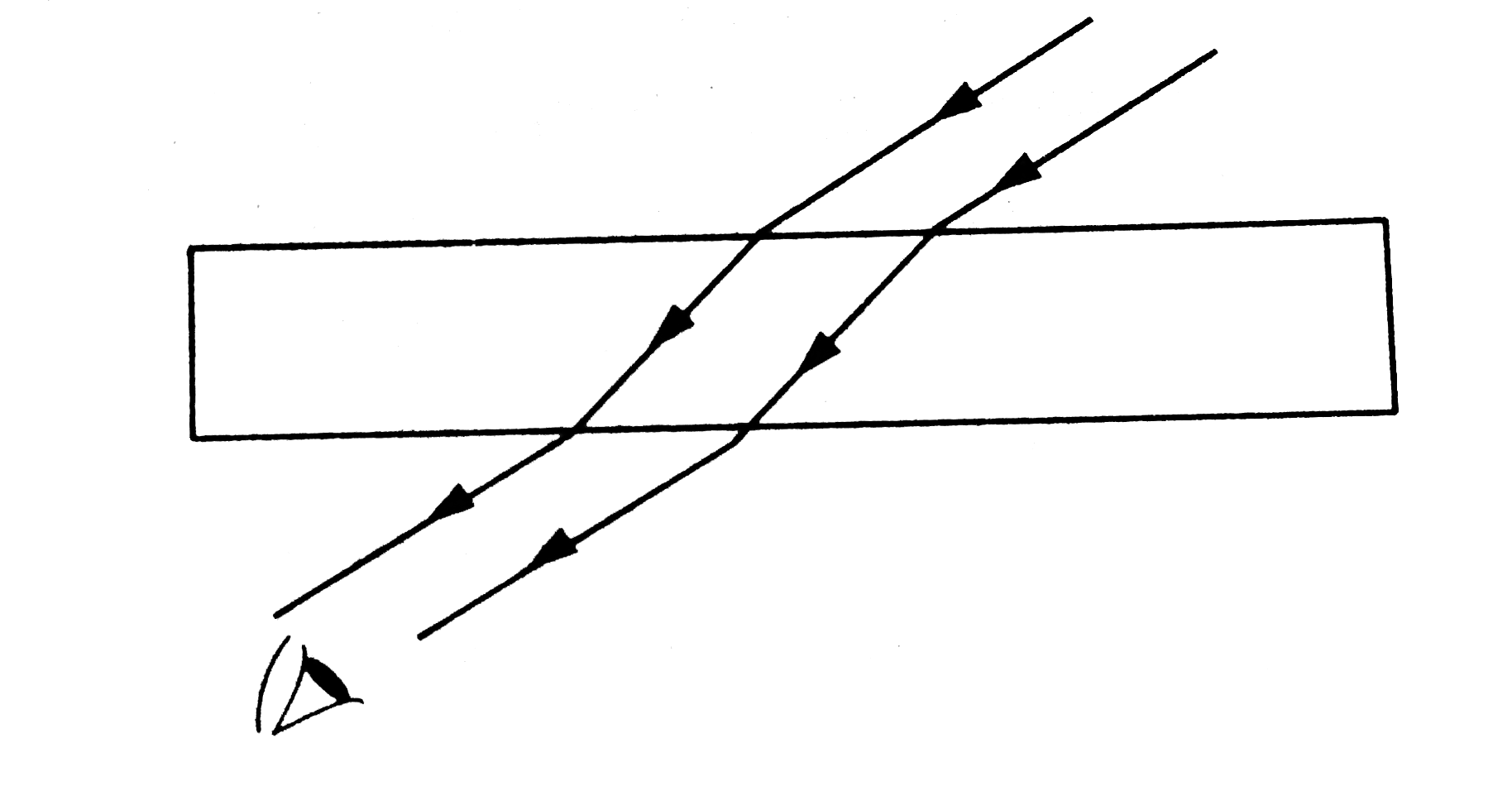A narrow beam of light passes through a slab obliquely and is then received by an eye. The index of refraction of the material in the slab fluctuates slowly with time. How will it appear to the eye? The twinkling of stars has a similar explanation.
 Solution in Gujrati
Solution in Gujrati
Step by step video & image solution for A narrow beam of light passes through a slab obliquely and is then received by an eye. The index of refraction of the material in the slab fluctuates slowly with time. How will it appear to the eye? The twinkling of stars has a similar explanation. by Physics experts to help you in doubts & scoring excellent marks in Class 12 exams.
Updated on:21/07/2023Topper's Solved these Questions
- GEOMETRICAL OPTICSBOOK - HC VERMACHAPTER - GEOMETRICAL OPTICSEXERCISE - Question For short Answer
1 Videos
- GEOMETRICAL OPTICSBOOK - HC VERMACHAPTER - GEOMETRICAL OPTICSEXERCISE - Objective 1
18 Videos
- GEOMETRICAL OPTICSBOOK - HC VERMACHAPTER - GEOMETRICAL OPTICSEXERCISE - Worked Out Examples
28 Videos
- GAUSS LAWBOOK - HC VERMACHAPTER - GAUSS LAWEXERCISE - Exercises
24 Videos
- LIGHT WAVESBOOK - HC VERMACHAPTER - LIGHT WAVESEXERCISE - Exercises
41 Videos
Similar Questions
Two converging lenses of unequal focal lengths can be used to reduce the aperture of a parallel beam of light without loosing the energy of the light. This increases the intensity. Describe how the converging lenses should be placed to do this.
View SolutionA point source of light is placed in front of a plane mirror.
View SolutionAn object is placed o the principal ais of concve mirror of focal length 10 cm at a distance o f8.0 cm from the pole. Find the position and the nature of the image.
View SolutionThe electric field in a region is given by →E=35E0→i+45E0→j with E0=2.0×103NC−1. Find the flux of this field through a recatngular surface of area 0.2m2 parallel to the y-z plane.
View SolutionFind the range of frequency of light that is visible to an average human being (400nm<λ<700nm)
View SolutionA narrow beam of light passes through a slab obliquely and is then received by an eye. The index of refraction of the material in the slab fluctuates slowly with time. How will it appear to the eye? The twinkling of stars has a similar explanation.

View SolutionA narrow beam of whit light goes through a slab having parallel faces.
View Solutionप्रकाश कि एक बीम कांच की एक आयताकार पट्टिका पर तिरछी गिरती है (चित्र34.C1 ) । पट्टिका से निकलती बीम को आँख द्वारा देखा जाता है। यदि पट्टिका के अंदर के पदार्थ का अपवर्तनांक धीरे-धीरे बलता जाए,तो आँखों से प्रकाश कैसे दिखेगा ? तारों के टिमटिमाने का कारण कुछ-कुछ ऐसा की बताया जाता है।

View SolutionA light passes through glass slabv of refractive index 1.5 and thickness 2 mm. How much time ray will take to pass through the glass slab ?
View SolutionRefraction of light passing through a glass slab.
View SolutionA ray of light passes through a glass slab of thickness t and refractive index mu . If velocity of light in vacuum is c then how much time will the light take to emerge from the slab?
View SolutionA glass slab is made such that the refractive index of the material increases with its depth. The glass slab is kept in air and a light ray is incident on its top face. How will the light ray pass through it ?
View SolutionA narrow beam of light passes through a slab obliquely and is then received by an eye. The index of refraction of the material in the slab fluctuates slowly with time. How will it appear to the eye? The twinkling of stars has a similar explanation.

View SolutionA narrow beam of white light goes through a slab having parallel faces.
View SolutionA light passes through glass slabv of refractive index 1.5 and thickness 2 mm. How much time ray will take to pass through the glass slab ?
View SolutionLight travels through a glass slab of thickness t and refractive index μ. If c is the velocity of light, then the time taken by light to travel the thickness of glass slab is :
View Solution
